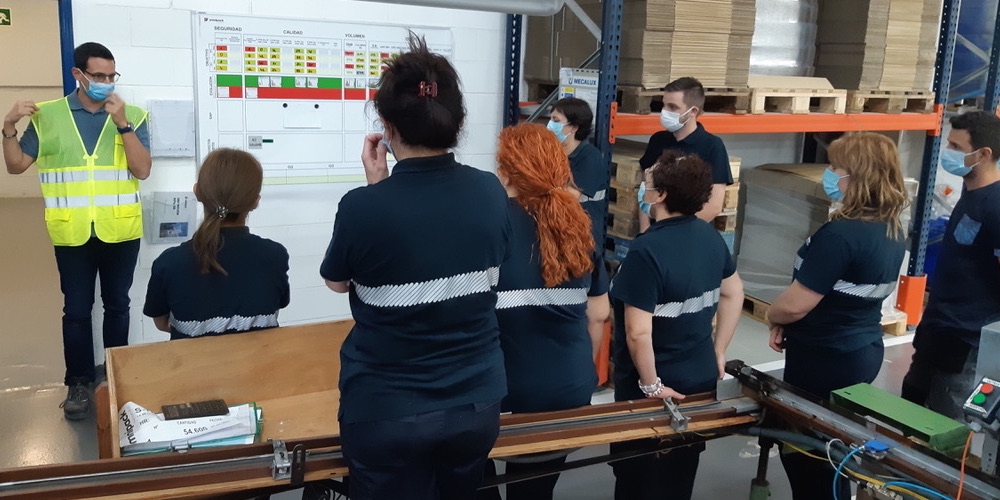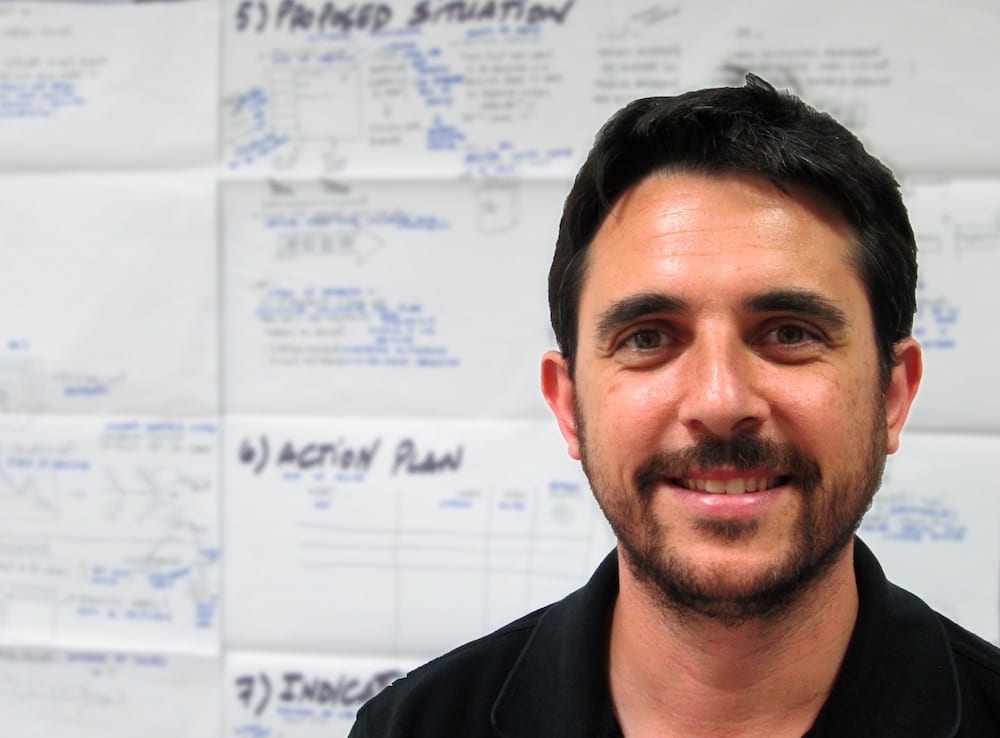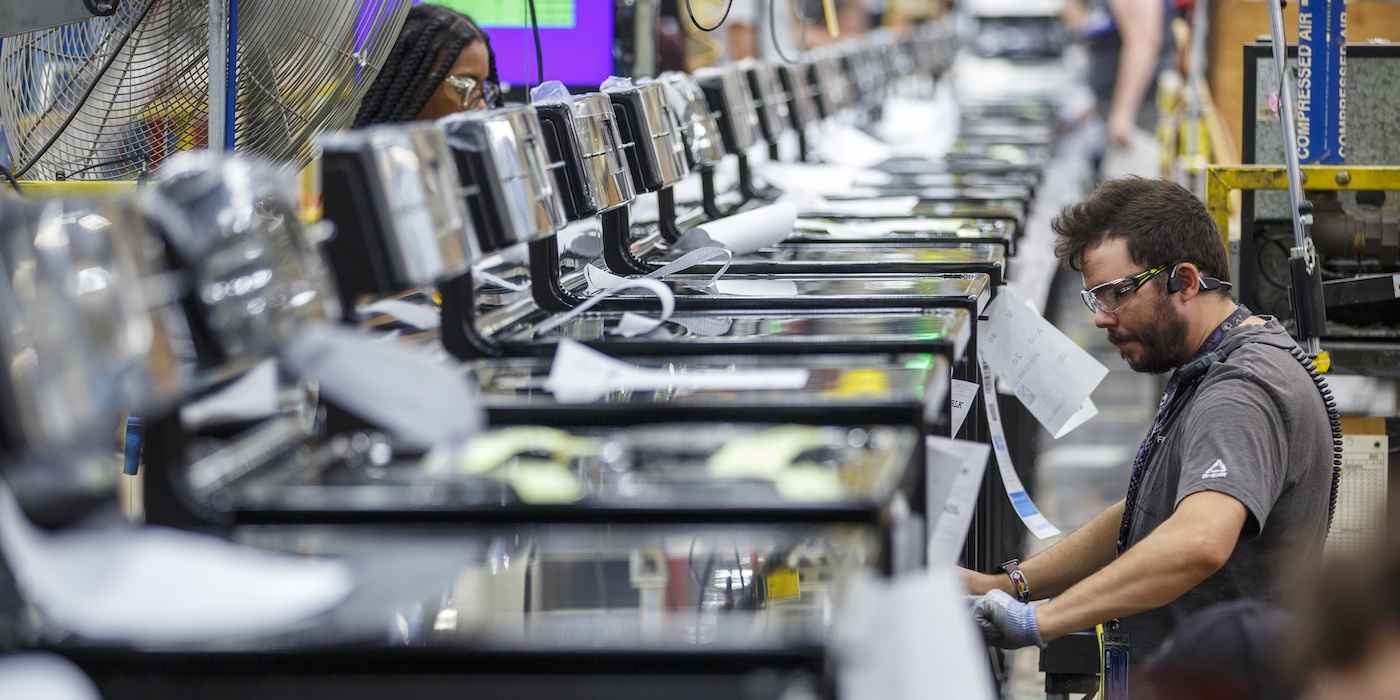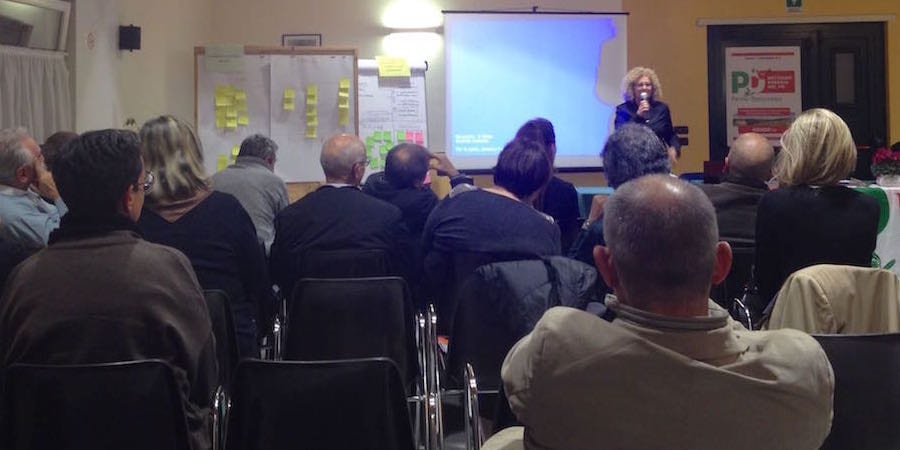
What to do when the fire is out?
CASE STUDY – This packaging company in Catalonia has been able to cleverly balance the resolution of urgent problems and the advancement of the lean transformation. But what to do when the burning platform is no more?
Words: Oriol Perez, David Llovich and Daniel Villanueva
Omnipack is a packaging company with two main lines of business. Historically, one of these has been profitable, while the other – finishing – has experienced losses. For years, we tried everything to turn it around (through several changes in management, for example), but nothing seemed to work.
In 2018, on top of the problems related to margin, we started to see a worrying increase in the number of quality defects. This resulted in the customer threatening to end the contract. (There is no burning platform more effective than that!) Faced with the prospect of having to change and eager to set off on a path towards continuous improvement to serve our customers every day better, the company decided to dive into Lean Thinking and hire a change agent (myself) as well as a Sensei to support our efforts (Nestor Gavilan from the Instituto Lean Management). That’s how our journey began.
At around the same time, the mindset of Top Management started to focus on making prevention a priority for the company and on embracing lean principles to standardize our processes and leadership behaviors across the company. The change at top management level gave a big push to our improvement efforts and we quickly began to structure our implementation around culture change and kaizen.
The first thing we did, guided by Néstor, was to start creating our Hoshin Kanri, hoping to move away from firefighting and make prevention part of our DNA while beginning to focus on process rather than cost. From the very beginning, we worked in full alignment with top management.
In 2019, our plant’s hoshin was ready. It had 25 KPIs – well defined and with clear ownership. From the start, people were taught how to gather useful and reliable data for each of those indicators, which in turn represented the results the company wanted to achieve.
It’s interesting that we introduced hoshin at the very beginning. We know lots of organizations wait until they are more advanced in their lean journeys, but we decided to trust Néstor with it. We didn’t understand what hoshin was at first, but now we do. We believe it is where PDCA starts. Hoshin tells us what to focus our improvement and our resources on (which is particularly useful when we have a lot of projects open – as is the case now that we are working to improving our information flow). It also allows us to translate P&L goals into tangible operative KPIs that the entire organization can understand, whereas before implementing it we had the impression that our business priorities changed every week. Hoshin has now become a fundamental tool for Top Management.
The early work we did with hoshin helped us to identify three main strategic projects (the first two referring to urgent business needs and the third one to the advancement of our lean transformation – as per the great approach described by Nestor in this article):
- Improving quality (PPM) and productivity selecting the most accurate tools based on the situation;
- OEE analysis to identify priorities and the root cause of our productivity issues:
- Development of a culture of prevention.


The business area that was more problematic has five very old assembly lines (all 60+ years old) and a more modern process through which 56% of our volume passes. We did a deep dive into our equipment, dividing each machine into work points – a very interesting exercise that revealed that the business problem was in one specific work point from one specific machine on one line. The infamous point 7 on line 1. When we found out about it and addressed it, we were able to go from 30 stoppages per shift to just one stoppage. Productivity went through the roof: in 2017, it was 450, while today it is 580.
Over time, our strategy has changed: at first, we were trying to reduce costs, whereas we now focus on creating basic stability and improving quality. On the first year, we went from 30-35% OEE in a line with no changeovers to 50%. Now we are at 60% with changeovers (we achieved this mainly by developing people and using standards). We have much more stability now, even with changeovers. It used to take us two weeks to change over and restart the line; now, we can do it in 8 hours and reach 70% OEE over the course of just one shift. Quality also improved significantly: we started with 70 ppm, and we are now at 31.
CULTURAL SHIFT
By 2020, we had become one of the suppliers providing our once-disgruntled client with the highest quality. As we gradually stabilized our process and solved our quality problems, we could start to focus more on advancing our lean transformation. This allowed us to concentrate our work on the cultural shift that it is necessary to become a lean enterprise.
Last year, we began the important work to ensure that the site’s hoshin is a good representation of our annual budget goals and gave a really big push towards visual management with the evolution of our Obeya room. At the same time, we started to work on soft skills – on developing lean leadership capabilities – and to design the OPS (Omnipack Production System, an adaptation of Toyota’s).

When the pandemic came, we quickly went back to the “red area”: there was another, huge business need to address now – ensuring supply to clients without compromising the health of our people. We relied on our developing lean culture to tackle the uncertainty caused by Covid-19, in particular with daily analysis of data, communication and teamwork. In fact, the year ended up being quite a healthy one, in many ways.
Our success was a result of the lean methodology, of course, but we also recognize the huge role played by people in our transformation. Before we started our lean transformation, in the section of our businesses that was experiencing losses 30% of the workers were temporary. Because of the very specific nature of the work, this meant we often struggled to bring newcomers up to speed quickly enough. When we started to work with Nestor and lean came into the picture, we realized we had to bet on our people and decided to hire the entire workforce full-time. That’s when we began to see change.
As we look back and reflect, we realize our lean transformation could have progressed more. To fill that gap, we have tried to devise a strategy that took into account the needs of different areas and allowed us to strike a balance between lean tools and culture. As John Shook said: “Lean is not lean if it doesn’t involve everyone.”
This balance is fundamental (lean is a socio-technical system), but hard to achieve. As managers, we have made mistakes in the selection of leaders because we weren’t mature enough in our understanding of lean. As a result, we were slow in making bold decisions and clearly betting on more lean leadership as a driver for change. We are now telling our leaders to focus on the culture, rather than the tools. For instance, we are asking them to redesign Daily Direction Settings so they focus on process, not just results. What matters is not that the result is green on the board, but that we know how to get to the green! We look at it as Leader Standard Work.
To summarize our lean journey to date, we can say that in 2019 we were clearly more focused on the tools. Starting in 2020, we have shifted our focus on culture to sustain the changes we made in the plant while changing the mindset of our people. Last year, we also moved to the weekly level of the section hoshin: each month is closed together with people from the line, who are told what the indicators are, what the strategy is, what is going to change the next month, and what allowed us to reach the green. This way, Strategy Deployment is going from top management to plant level.
THE FIRE IS OUT… WHAT NOW?
We now have young, enthusiastic leaders we are very happy with. We are relying on basic tools that are proving to be enough to give us a management routine we can follow. We are striving to find an effective way to align our leaders and ensure that those who join us can quickly adopt the Omnipack way of thinking and working. So, we are working hard on creating standards and I am personally coaching young leaders to ensure they ground their leadership in those standards.
Our current challenge is that, since the fire in the finishing section is out, we have no burning platform to drive our transformation forward. Even though the Plant Top Management wants to continue with it. What do you do when the fire is out? How are we capable of breaking down “generated” problems to the rest of the organization? We are experiencing an interesting dynamic: the once-problematic section has now embraced lean culture, whereas the areas where things have historically gone well are struggling to do so. I am encouraging the management team to change the way they talk about the situation in the area: rather than saying there are no problems, they should start highlighting the improvements we can make there. I believe we need to get out of our comfort zone. The reluctance they feel is likely due to the fear that we might destroy something that is working, but I am not worried about it at all. The fact that things are good doesn’t mean they can’t be better. It’s not about what we are gaining, it’s about what we are missing out on.
As I reflect on our journey to date, I can say that lean without a cultural transformation is not lean. Lean Thinking may be the slowest path, but it’s the only one that guarantees that people learn every day and that results can be sustained.
Without culture, we can achieve technical improvements, but we will never create a sense of responsibility in people. We can’t have the continuous improvement team on top of everything. We use the tools – like A3 Thinking – like a Trojan horse, a way to put the foot in the door and change the culture while transferring ownership of the improvement work over to people and feeding and creating the systems that are going to ensure any future deviation from the standard is seen.
There is, of course, an added benefit to this: now that problems are flagged up right away and tackled swiftly, we leaders can focus on creating a path to a better future for the organization. You can’t do that if you are busy fighting fires every day. One of the main goals of a lean organization is to be able to look to a better future, to the fulfilment of its vision, and we cannot do that if we do not have the time to focus on improving our strategy. To achieve this, we need to ensure there is balance in the working life of the different players in the organization, so that they can spend their time in the way Masaaki Imai explained in his book Kaizen– The Key to Japan’s Competitive Success (see chart below).

As we look around and see so many organizations around the world embracing Lean Thinking, we are encouraged to continue our journey. We know we have a long way to go but are excited to see where this transformation takes us. The “lean way” has just begun!
THE COACH COMMENTS
By Nestor Gavilan, Instituto Lean Management

The story of Omnipack is a great example of how the advancement of a lean transformation needs to go hand in hand with the resolution of urgent business problems. At the company, there were areas that had to improve things urgently. In parallel, we worked to create a lean culture across the organization. The business needed quick wins to drive the journey forward. When the client threatened to end its contract with Omnipack due to quality problems, the team – led by Oriol, with the full support of the steering committee (David, Natalia and Daniel) – did a fantastic job to address those issues. Oriol created a giant board that would help operators to tell good work from bad work – that’s when the improvement started. It was the first time we involved the operators, encouraging them to gather the data we needed to make their lives easier and to keep the board updated. The front line was quick to engage with the new changes, because they saw that updating the charts meant that Oriol showed up to help them.
The team at Omnipack has also done a remarkable job with leadership. In 2019, management realized what the essence of lean is and decided to do something to change their managerial approach. We ran a session with Eva Fernandez to understand the type of leadership the company needed. The second session was critical in identifying the leadership traits they wanted to develop. This drive to create more and more lean leaders across the organization speaks to the company’s will to transform its culture.
When I started working with Omnipack, I saw a very P&L-focused plant. We needed to move away from that and create a system where business problems can be easily identified and resources deployed quickly. That way, good results in the P&L sheet become a consequence of the work being done. The management team has learned this “by doing” and each of them are now good lean practitioners! Oriol made a huge effort to make lean tangible for everyone, knowing that without that there is a lot of effort and little impact. This connection between the work people do and the results they are asked to achieve is fundamental. When it fails to materialize, the lean transformation fails. It’s great to see Omnipack is building such solid foundation for its lean journey. All the best for the future of this great team and company!
THE AUTHORS



Read more


FEATURE – Why do lean transformations benefit from the support of a sensei? Michael Ballé discusses how we typically need help to take the emotions out of the work and go down uncomfortable paths.


INTERVIEW – Learn how Lean Thinking helped GE Appliances improve performance, develop people, and build a resilient, customer-focused, and learning-driven organization.


INTERVIEW – Rose Keanly discusses the role of lean in a strategic business transformation in the financial services sector and the dos and don’ts of bringing lean to a large organization.


FEATURE – A local branch of Italy’s Democratic Party has started using lean principles and tools to organize its activities more effectively and to counteract the discouragement that followed a bad electoral defeat.

